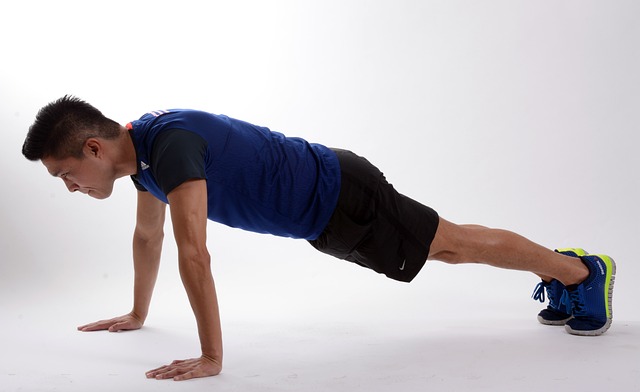Push-ups are one of the most versatile exercises, targeting the chest, shoulders, triceps, and core. While they seem simple, doing them with incorrect form can lead to injury or diminished results. Here’s a complete guide to mastering the perfect push-up.

Benefits of Proper Push-Up Form
- Maximized Muscle Activation: Correct form ensures you’re engaging the right muscles.
- Injury Prevention: Proper alignment reduces strain on your wrists, shoulders, and lower back.
- Core Strength: Maintaining a straight line activates your core for stability.
Step-by-Step Guide to the Perfect Push-Up
- Start in the Right Position:
- Place your hands slightly wider than shoulder-width apart on the floor.
- Keep your feet together or slightly apart for balance.
- Ensure your body forms a straight line from head to heels. Avoid sagging or arching your back.
- Engage Your Core:
- Tighten your abdominal muscles to maintain a stable plank position.
- Keep your glutes engaged to prevent your hips from dipping.
- Lower Yourself with Control:
- Bend your elbows at a 45-degree angle, lowering your chest toward the floor.
- Aim to stop when your chest is just above the ground or until you feel a stretch in your chest.
- Push Back Up:
- Press through your palms to straighten your arms, returning to the starting position.
- Avoid locking your elbows at the top to maintain muscle tension.
- Maintain a Neutral Neck:
- Keep your head aligned with your spine. Looking too far up or down can strain your neck.
Common Mistakes to Avoid
- Flared Elbows: Keep elbows at a 45-degree angle to protect your shoulders.
- Sagging Hips: Engage your core to avoid dropping your lower back.
- Rushed Movements: Slow, controlled reps are more effective than fast, sloppy ones.
- Inconsistent Breathing: Inhale as you lower yourself and exhale as you push up.
Push-Up Variations to Challenge Yourself
- Knee Push-Ups: Great for beginners working toward standard push-ups.
- Incline Push-Ups: Easier version where hands are elevated on a sturdy surface.
- Diamond Push-Ups: Targets triceps with hands close together in a diamond shape.
- Wide Push-Ups: Focuses more on the chest with hands placed wider apart.
- Plyometric Push-Ups: Add explosiveness by pushing off the ground at the top of the movement.
How Many Push-Ups Should You Do?
Your ideal number of push-ups depends on your fitness level:
- Beginners: Start with 5–10 reps for 2–3 sets.
- Intermediate: Aim for 10–20 reps for 3–4 sets.
- Advanced: Perform 25+ reps for 4–5 sets or explore advanced variations.
Final Tips for Perfect Push-Ups
- Warm up your wrists and shoulders before starting.
- Focus on quality over quantity.
- Progress gradually to avoid overexertion or injury.
Mastering the perfect push-up takes time, but the results are worth the effort. Incorporate them into your workout routine for a stronger, fitter you!
